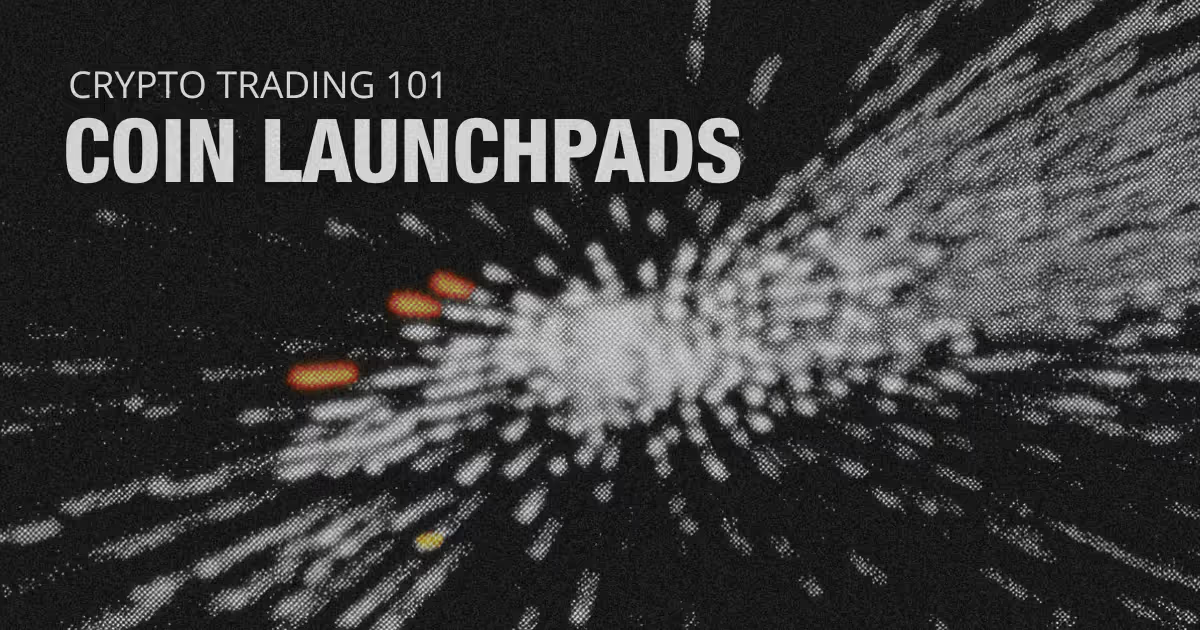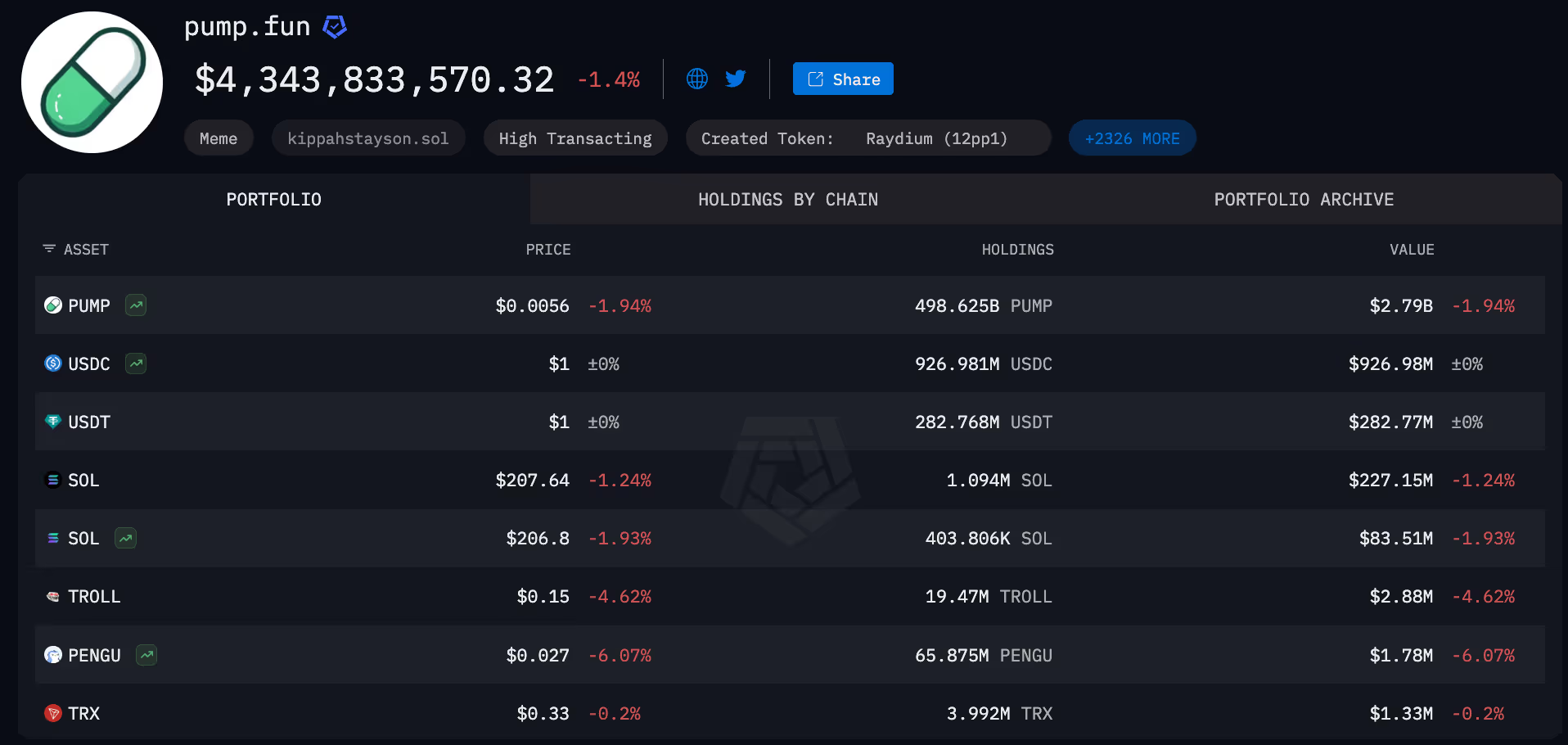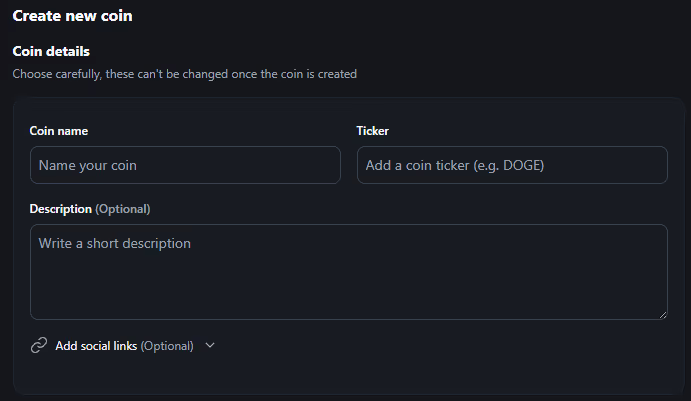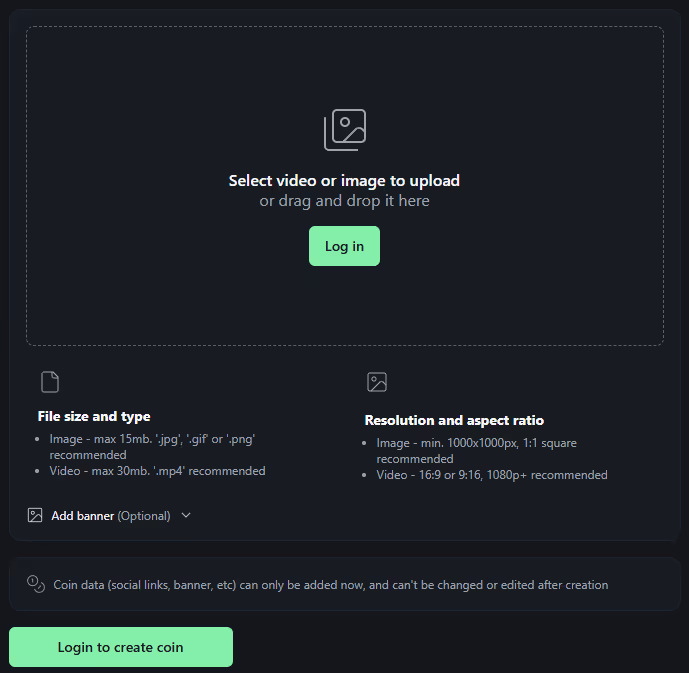October 23, 2025
at
2:00 pm
EST
MIN READ
Crypto Trading 101: Coin Launchpads

During this current crypto bull market, memecoin launchpads have emerged as a breakout trend. Pump.fun has led the way, being the first to gain significant traction with novel features such as livestreaming.
Crypto launchpads have existed in the past, but previous platforms did not cater to the memecoin audience the way pump.fun has. Traditionally, these launchpads were designed to seed blockchain projects with capital, allowing teams to begin building out their vision and launch their tokens when ready.
In this article, we will explore these crypto launchpads in depth. Read on to find out what they do, how they work, and their future outlook.
What is a crypto launchpad?
A crypto launchpad is a platform where new cryptocurrency projects are introduced to users with the aim of raising money. Early stage funding is crucial to getting a project off the ground as projects need capital to start building. Through launchpads, users can become early investors with the potential of high returns and help to form the early community of these projects.
There exist many different types of crypto launchpads, with each focusing on a unique theme. Some launchpads focus on specific chains or ecosystems. Other launchpads focus on a specific theme within crypto, such as memecoins.
How do crypto launchpads work?
The crypto launchpad process starts with a project’s team applying to the launchpad. Curated launchpads require a formal application process, which includes KYC and audits to ensure a baseline level of legitimacy and quality for the project. Open launchpads, on the other hand, allow anyone to instantly launch their project on the platform without any sort of auditing process.
Next, a token smart contract is created. Here, the team for a project can specify the tokenomics and other details for their token. These details can include information such as a name, ticker, total supply, taxes, and vesting schedules. For memecoin launchpads, this tends to be a very quick, one-click contract deployment that can be done in seconds.
The next step is the presale/fundraising process. During this period, early investors can buy tokens on the launchpad before they hit the open market. Different launchpads have different approaches to participation models for investors. Simpler participation models are first come, first served with fixed price sales where everyone buys at the same rate. More complex models include lottery allocations where users are randomly chosen to become investors, tiered allocation systems revolving around holding the native token of a launchpad, and bonding curve models where price is determined by a curve.
Once the presale process has ended, the TGE (token generation event) occurs. A smart contract is minted and the token becomes tradeable. Additionally, a liquidity pool for the new token is created on a DEX using a portion of the funds raised during the presale from investors. Most launchpads also choose to lock their liquidity for an extended period of time to help eliminate the possibility of a rug pull and give potential new buyers more confidence to do so.
Investors also begin to receive their allocated tokens based on what they invested during the presale period. Memecoin launchpads tend to have no vesting periods, and investors receive all of their tokens at once. More serious projects will set up a vesting schedule, where investors will slowly receive portions of their allocated tokens according to the schedule. This helps prevent investors from dumping too much at once.
The top crypto launchpads
Serious Launchpads
DAO Maker: DAO Maker is a curated multichain launchpad that is centered around Strong Holder Offerings (SHOs), which are designed to reward investors who are committed for the long haul. DAO Maker vets launchpad projects heavily with audits and research, presenting itself as a Venture style platform. This launchpad uses a tiered participation system based on staked $DAO tokens.
Seedify: Seedify is a curated multi-chain launchpad with a strong focus on BNB Chain projects, as well as other EVM protocols. Seedify also primarily features gaming, metaverse, and NFT sector projects. Seedify utilizes an incubation model, where other services such as strategy advisory, marketing, and tokenomics design are provided to launchpad projects. Projects on Seedify are well-vetted compared to the rest of the GameFi sector. Participation in Seedify’s presales is tiered based on the amount of $SFUND one has staked.
Polkastarter: Polkastarter started off as a curated Polkadot centric launchpad, but has since expanded to other EVM chains (Ethereum, BNB, Avalanche, Polygon, etc.). Polkastarter is focused on early-stage Initial DEX Offerings (IDOs) for more serious Web3 projects. Polkastarter has a reputation for fast and fair IDOs due to its fixed swap pools, which means that tokens are sold at a set price during the IDO. All investors who get into the pool pay the same price, which helps avoid gas wars. Investor access to the fixed swap pools is gated by a combination of holding/staking $POLS and a lottery system where larger amounts of staked $POLS grants users better odds. Vetting on Polkastarter exists, but is looser than that of DAO Maker and Seedify.
Memecoin launchpads
Many memecoin launchpads have sprung up during this crypto cycle. The defining characteristic of these platforms is that anyone can create a coin without any coding knowledge. These launchpads see a huge volume of memecoins being created daily. Some of these memecoins have seen large speculative returns, but the majority launch and die quickly.
Pump.fun: Pump.fun has emerged as a leading Solana-based memecoin launchpad,operating on a largely permissionless basis. The platform does not conduct vetting of new tokens, allowing anyone to create a new pump.fun token with only a few clicks. Pump.fun uses a bonding curve, where the token starts low and rises in price as more people buy. Once the bonding curve has been filled, pump.fun creates a liquidity pool on Raydium and locks it.

How to make a coin on Pump.fun
Launching a Pump.fun coin is a simple process.
Head to https://pump.fun/create, and log in to the website using a Solana wallet that has some SOL to cover gas and launch fees. You’ll need to have a coin name and a ticker in order to launch. A description can be added as well, but isn’t required to launch. Social links (website, Telegram, and X), videos, and images can be added as well.
Note: We don't endorse the creation of any token. The creation and trading of cryptocurrencies involve significant financial and legal risks.


Once these fields have been filled out, pay the creation fee, and your token contract will be deployed.
When launching a coin on Pump.fun, one billion tokens are generated, and ~800 million of these tokens are put into the bonding curve. As people buy the new coin, the token price automatically increases according to Pump.fun’s bonding curve. Once enough people have bought the new coin and the market cap of the token reaches $69,000, a portion of the capital raised is used to create a liquidity pool on Raydium, and the LP tokens are burnt, locking the liquidity and so that no actor can arbitrarily remove liquidity.
While pump.fun has made launching a coin much easier, the platform has also garnered a reputation as a “Wild West” environment for the exact same reason. Since anyone can create a token, a large amount of low quality coins are created every day. Combined with the lack of a vetting process, this leads to plenty of scams and rug pulls on the platform. Investors looking to speculate on pump.fun memecoins should be aware of the risks involved in doing so.
What does this mean for ICOs?
The current launchpad model is similar in many ways to the Initial Coin Offering (ICO) mania of 2017-2018. Both involved early-stage crypto projects looking to raise funds by selling tokens at a low valuation, but the specific mechanisms have evolved over the years.
ICOs typically raised ETH or BTC directly from retail investors, similar to launchpads today. However, the ICOs during this era typically had no vetting or KYC - just a whitepaper and a wallet address to send funds to. Anyone could invest in these projects. There were no tiered allocation or lottery systems serving as a barrier to entry. However, since these projects had little oversight, exit scams and fraud were rampant in ICOs. Many projects took investor money and simply disappeared. ICOs also had issues with liquidity, as tokens were often illiquid for months before they were listed on an exchange.
Launchpads, on the other hand, do a better job of protecting investors by performing audits and having a thorough vetting process to ensure the quality of the projects on their platform. While the success of these projects isn’t guaranteed, investors benefit from increased team vetting (on some platforms). Launchpads also help address the liquidity issue that ICOs had by listing tokens on a DEX or CEX very quickly, with many taking a portion of the funds raised to create a DEX liquidity pool as soon as fundraising has finished. Although curated launchpads introduce stronger vetting and liquidity mechanisms than the 2017 ICO era, risks of failure and fraud remain.
What is the future of crypto launchpads?
Launchpads may evolve from token distribution platforms for projects towards data-driven compliance minded platforms. Launchpads in the future will likely harness machine learning models to screen projects by having these models review founder history, coding activity, and on-chain patterns to generate a risk score for investors. This allows launchpads to quickly perform due diligence at scale in a quick and efficient manner. Smarter adversarial project scams will try to game this system, but overall, this will filter out and discourage a significant portion of scam projects from being listed on launchpads.
The rise of decentralized identity (DID) will also allow users to prove attributes such as accredited investor status and country of residence to launchpads without needing to reveal personal data on-chain. By integrating DID, launchpad teams will be able uphold regulatory compliance laws while maintaining the privacy and safety of their users. This is important, as lawmakers around the world have been increasing their anti-money laundering and KYC enforcement in the cryptocurrency space. Launchpads that wish to scale to an institutional level or qualify for large centralized exchange listings will need to be able to have a robust compliance process, and integrating DID will be one important step towards this goal.
Regarding governance, most launchpads today are semi-centralized. The core team decides which projects to onboard and handles matters such as legal checks and due diligence. Token holders have some say on matters such as allocations and new features, but control is mostly centralized. In the future, launchpads could transition to DAO models of governance where token holders have a larger say in running the launchpad and evaluations are spread across a much wider team.
Arkham has not been compensated for this article, which is provided for informational purposes only. Arkham does not recommend or endorse any platform or service mentioned.





























































































































































































































.png)